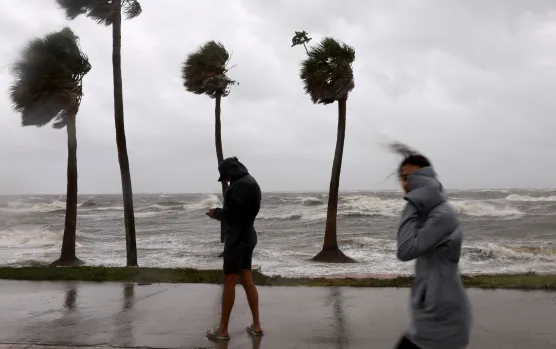Helene, now weakened to a post-tropical cyclone, continues to move toward Virginia after wreaking havoc across the southeastern U.S. The storm first made landfall on Thursday night near Perry, Florida, as a Category 4 hurricane, packing winds of 140 mph. It triggered a deadly storm surge and left extensive destruction in its wake.
Helene’s impact has been devastating, with at least 41 reported deaths across Florida, Georgia, and the Carolinas. Among the fatalities, several were caused by fallen trees, storm-related accidents, and flash flooding. In South Carolina, two individuals lost their lives after trees collapsed onto homes, while other casualties were reported in Georgia, including a highway crash caused by the storm. The storm surge in Florida led to catastrophic flooding, leaving homes submerged up to their roofs and boats piled up in marinas like scattered debris(AOL.com)(The Independent).
As Helene moves northward, it has weakened substantially but continues to pose a significant threat due to heavy rainfall. The system is expected to track through Virginia, the central Appalachians, and southern Pennsylvania with weakened winds, but flash flooding remains a concern. Power outages have been widespread, with millions across the Southeast and parts of the eastern U.S. still without electricity(AOL.com).
In areas like Tennessee and Kentucky, where the storm is expected to meander over the weekend, officials are on high alert for potential landslides and flash floods. Though the winds have decreased significantly—down to 35 mph in some areas—the heavy rains are forecasted to continue. Emergency response efforts are ongoing, with crews conducting water rescues and clearing debris(AOL.com)(The Independent).
The cleanup efforts are expected to be extensive, particularly in Florida’s Big Bend region, where the storm made its initial, devastating impact. Residents are beginning the slow process of recovery, but with continued downpours forecasted for central and northern regions, the dangers from flooding remain high. The storm’s remnants are projected to exit the U.S. by early next week, leaving behind a trail of destruction across multiple states(AOL.com).
Helene’s rapid intensification and devastating path through the Gulf Coast make it one of the most dangerous storms of the year. As the Southeast begins to recover, the lessons learned from this catastrophic event will likely shape future preparedness and response efforts.



